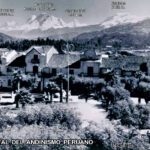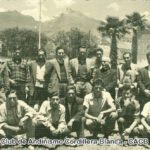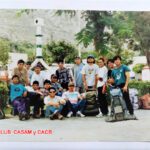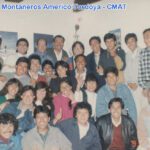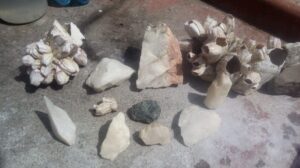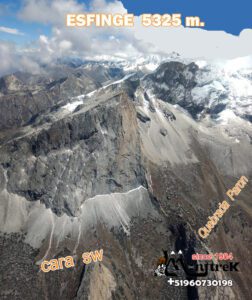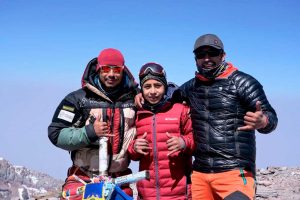HISTORY OF PERUVIAN ANDINISM
In 1860, Antonio Raimondi (Italian scientist) when he arrived at the Callejón de Huaylas and Conchucos, carried out the first Geological study of the department of Ancash and in 1873 he published the book: "The department of Ancash and its mineral wealth."
On October 3, 1903, the conquest of the glaciers of the Cordillera Blanca began when the mountaineer C. Reginald Enock discovered a possible route to the snowy Maparaju to the east of Huaraz, between the Cayesh and Carhuascancha ravines, in May 1904. He attempted to climb the snow-capped Huascarán, reaching 5100 meters alone.
As is known, on September 2, 1908, the American Annie Peck, accompanied by two Swiss guides, Gabriel Zumtaugwald and Rudolf Taugwalder, carried out the first expedition that reached the top of the northern peak of Huascarán, after two frustrated attempts in 1904 and 1906, controversies continue whether he reached the summit or not.
Between the 19th and 20th centuries, German scientists Gustav Steinmann (geologist), Augusto Weberbauer (botanist) and Wilhelm Sievers (geographer) began systematic studies of the Cordillera Blanca, publishing scientific articles and books on the mountain range.
BLANCA AND HUAYHUASH CORDILLERAS
In 1932, the Alpine Societies (Alpenverein) of Germany and Austria began scientific expeditions to the Cordillera Blanca, including the first ascent of Huascarán Sur, over the course of three expeditions in 1932, 1936 and 1939. The group was made up of researchers, Philipp Borchers, Hans Kinzl and Erwin Schneider, publishing the book Die Weisse Kordillere (1935), the first scientific study of the Cordillera Blanca. They also carried out cartographic work and new maps of the north and south of the Cordillera Blanca. In 1950, the cartographer Fritz Ebster published the first map of the Cordillera Blanca.
Kinzl continued to organize expeditions between 1936, 1939 and 1954.
In 1950, Erwin Schneider published a fantastic illustrated book titled Cordillera Blanca of his experience of having climbed 12 six-thousand peaks in the Cordillera Blanca, and 6 six-thousand peaks was climbed for the first time in the Cordillera Huayhuash; He designed the first maps of the mountains of the region. In addition to his work as a cartographer, Schneider achieved many first ascents in particular.
BEGINNINGS OF PERUVIAN ANDINISM.
On January 27, 1952, the Cordillera Blanca Mountaineering Club was founded, and on August 4, 1953, the brothers Fortunato and Felipe Mautino; The brothers Guido, Apolonio and Pedro Yanac, and Macario Ángeles reach the top of the snow-capped Huascarán (6768 meters), then Aconcagua in 1956. These achievements inspired the formation of other mountain clubs in Lima, Cusco, Arequipa, Huancayo, Puno (Los Cóndores de Orcopata Mountaineering Club) and others. Among them the Peruvian Andean Club in the 1950s. On September 11, 1979, the glorious “Santiago Antúnez de Mayolo” Mountaineering Club – CASAM was founded. On September 14, 1984, the Américo Tordoya Mountaineering Club was founded in Lima, later the University of Lima Mountaineering Club was founded, Enrique Prochazca founded the DRAKO group. In 1992 I had the honor of forming the Mountaineering Club of the Huaraz Pedagogical Institute, with this in Huaraz – Ancash there were 3 mountaineering clubs (CACB, CASAM, Pedagogical Andinism Club); Immediately afterwards we formed the Ancash Regional Mountaineering League (according to the sports law of that time) with representation in the Peruvian Mountaineering Federation; where my person was elected as the first president, once I fulfilled the 2-year position, I gave the baton to the second elected; Unfortunately, due to lack of knowledge and fatal support for Peruvian mountaineering on the part of the national authorities at the sporting level, among others, the federation stagnated and disappeared.
In all this beautiful journey of mountain life, great climbers are born with great sporting achievements (later topic)
ASCENTS AND DESCENDATIONS OF ANCIENT PRE-INCA CULTURES
The ancient cultures and empires of Peru, as in other parts of the world, made ascents and descents to volcanoes, mountains, hills... for magical religious purposes, often with sacrifices of animals and humans; Respect and veneration for their supreme gods prevailed; Later the Incas continued with the rituals (the CAPACOCHA was a way to stop a natural disaster or ensure a healthy harvest. It was a true privilege for Inca parents to have their child selected as a sacrifice). In the north of Peru the veneration was done to our HIRCAS, in the south of Peru to the APUS.
- Author: Porfirio Cacha –

